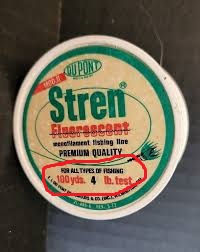5 Top Angler Secrets To Quickly Catch Big Bream
- inthaloop1
- Mar 27, 2023
- 4 min read
Angler fishing is a popular sport that many people enjoy. The thrill of the catch is what keeps people coming back for more. If you’re someone who’s looking to improve their angler fishing skills, then you’ve come to the right place. In this article, we’ll be sharing with you 5 top angler secrets to quickly catch big bream.
Bream are a type of freshwater fish that are found in many parts of the world. They’re usually found in lakes, ponds, and rivers. Bream are a popular target for anglers because they put up a good fight and they’re also delicious to eat.
So, without further ado, let’s get started!

1. Pay attention to the weather and time of day
Bream are known to feed on insects and other small creatures that are found in the water. Therefore, it’s important to pay attention to the weather and time of day when you’re planning to fish for bream. They’re more active during dawn and dusk when the water temperature is cooler. Additionally, a cloudy or overcast day usually makes for better fishing compared to a sunny afternoon.

When it comes to bait, bream are not very picky, and will take a variety of offerings. Worms, grubs, and crickets are some of their favorites. In addition to live bait, small lures and jigs can also be effective. Remember to keep your line as light as possible, as bream have small mouths and can be easily spooked.
When fishing for bream, it’s important to stay patient and wait for them to bite. They are known for nibbling at the bait before actually taking it, so it’s important to resist the temptation to immediately set the hook upon feeling a tug. Wait until the line is fully taut before setting the hook.
Overall, fishing for bream can be a fun and rewarding experience for anglers of all levels. By paying attention to their feeding habits and using the right bait and equipment, you can increase your chances of catching these elusive fish.
2. Use live bait
Bream are more likely to take a bite of live bait compared to artificial lures. So, it’s best to use live worms, crickets, or grubs when angler fishing for bream. You can easily find these at your local bait shop.

Additionally, using smaller hooks and lighter lines can increase your chances of bream biting your bait. Bream tend to stay in shallow waters near banks, fallen trees, or weeds, so look for these areas when fishing for them. Keep your bait still or move it slowly to attract the bream.
Using a bobber or float can also be helpful since it can keep your bait suspended in the water where the bream are likely to be feeding. Keep in mind that bream tend to feed more actively during dawn and dusk, so these times may be better for catching them.
Overall, a simple setup with live bait and patience can increase your chances of catching bream when angler fishing.
3. Use a light fishing line
Bream can be easily scared off if they sense any resistance. This is why it’s important to use a light fishing line such as 4-6-pound test. This will allow you to cast your line further and make a more natural presentation in the water.

When fishing for bream, it’s important to have patience and avoid making too much noise, as this can scare them away. Look for areas with good cover, such as weed beds or fallen trees, as bream like to hide in these areas.
4. Fish near structures
Bream tend to gather near structures such as roots, logs, and rocks. They use these structures for protection and to look for food. Therefore, it’s a good idea to fish near these structures. Make sure to cast your line as close as possible to the structure without getting snagged.
Using live bait such as worms, crickets, or minnows can be very effective when fishing for bream. However, they also respond well to artificial lures such as small jigs, spinners, and poppers. Bream often feed close to the surface, so a topwater lure can be especially effective.

One trick to catching more bream is to use a small bobber. This will help you see when a fish bites and make it easier to set the hook quickly. Bream are known to have a soft bite, so it’s important to be ready to set the hook as soon as you see the bobber move.
5. Be patient
Fishing requires patience and angler fishing for bream is no exception. You may have to wait for a while to get a bite. Instead of constantly moving from one spot to another, try staying in one place and wait for the bream to come to you.

In conclusion, these 5 angler secrets should help you catch big bream more quickly. Remember to pay attention to the weather and time of day, use live bait, use a light fishing line, fish near structures, and be patient. With these tips, you’ll be well on your way to becoming a successful bream angler.




Comments